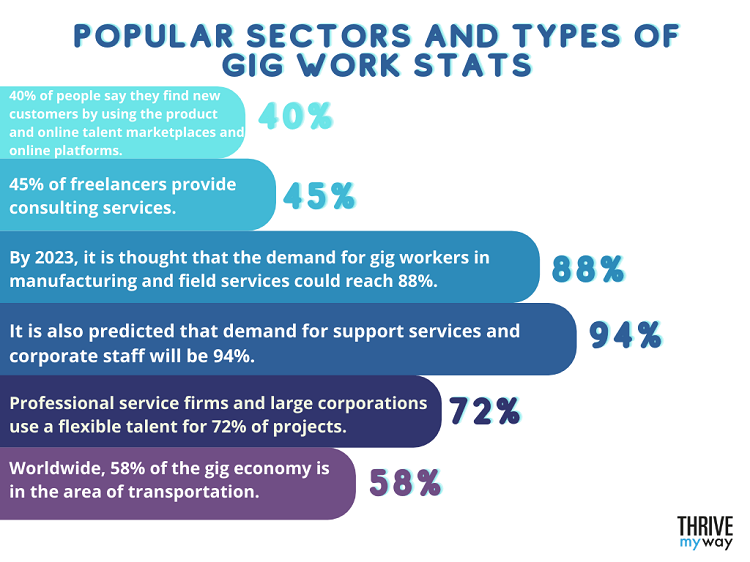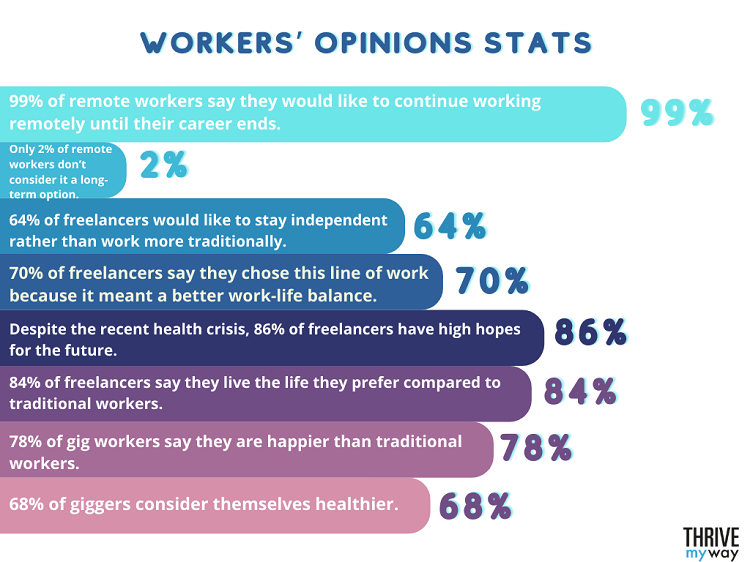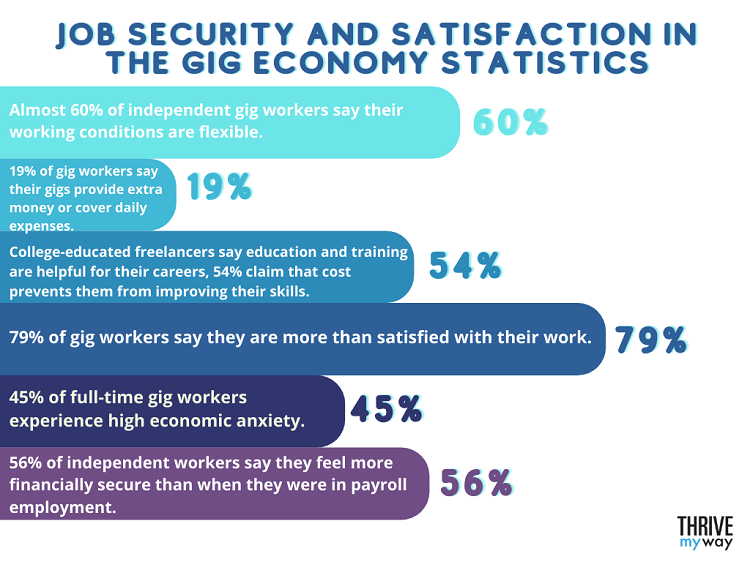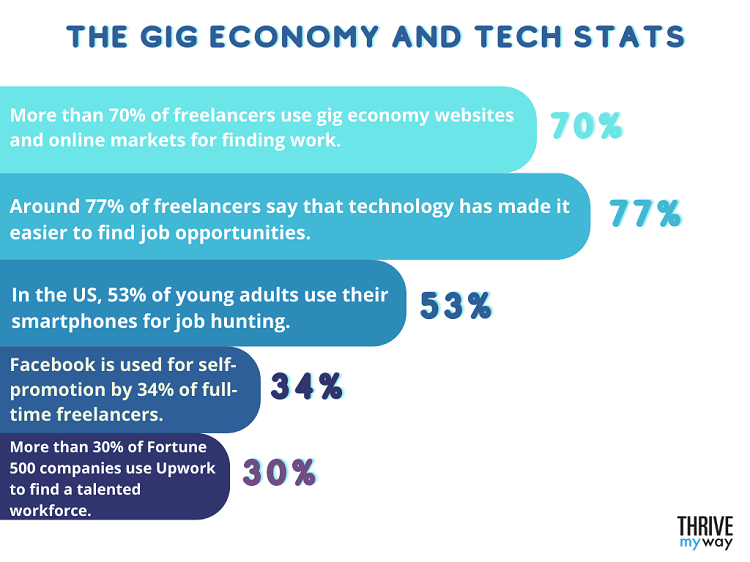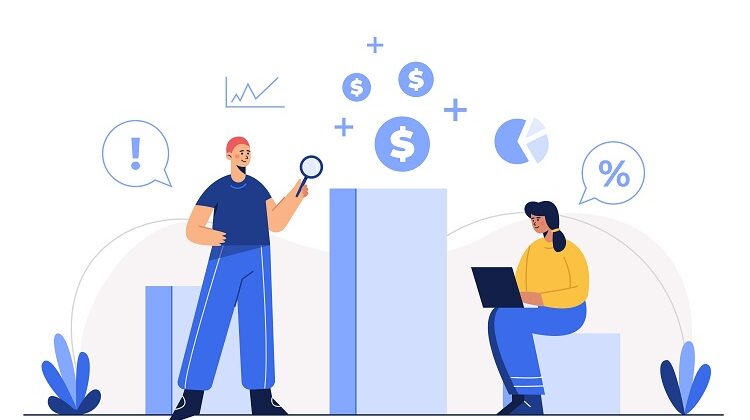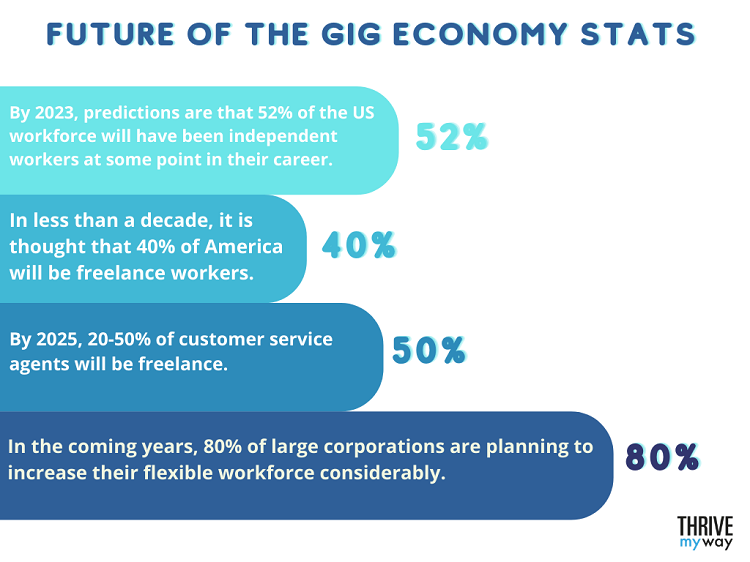In some places, they say it’s on the decline, while some say it’s booming. If you want to know the truth behind this phenomenon, the following gig economy and freelance statistics and trends will open your eyes. The gig economy is a term that people use to describe a specific labor market sector. The jobs that giggers do tend to be more short-term rather than permanent. All kinds of contingent work arrangements get grouped under the term including:
Consultants Freelancers Independent professionals and contractors Temporary contract workers (temps) Outsourced networks and teams Moonlighters
Now you know what we’re talking about, let’s dive in with some gig economy stats that paint a picture of what work looks like today.
Key Gig Economy Stats and Trends 2023
Global Gig Economy Statistics
Gig Economy Size Stats
Popular Sectors and Types of Gig Work Stats
Gig Work During COVID Stats
Gig Economy Labor Statistics
Workers’ Opinions Stats
Demographics of Gig Economy Workers Stats
Job Security and Satisfaction in the Gig Economy Statistics
Gig Workers’ Financials Stats
The Gig Economy and Tech Stats
Current Gig Economy Trends
Future of the Gig Economy Stats
Conclusion
We might think the gig economy is something new, but it’s been around since the early 1900s. Jazz musicians conceptualized the term, and gig-type work was promoted to fill workforce gaps during World War II. Since then, the gig workforce has been growing exponentially, and it doesn’t appear to be slowing down anytime soon. If you were considering becoming part of the gig economy, the statistics we’ve shared might just convince you that it’s worth taking the plunge. We gathered the data and information from many different sources, including the following: Gigs Done Right What to Become SmallBizGenius Zety Fortunly FinancesOnline About

